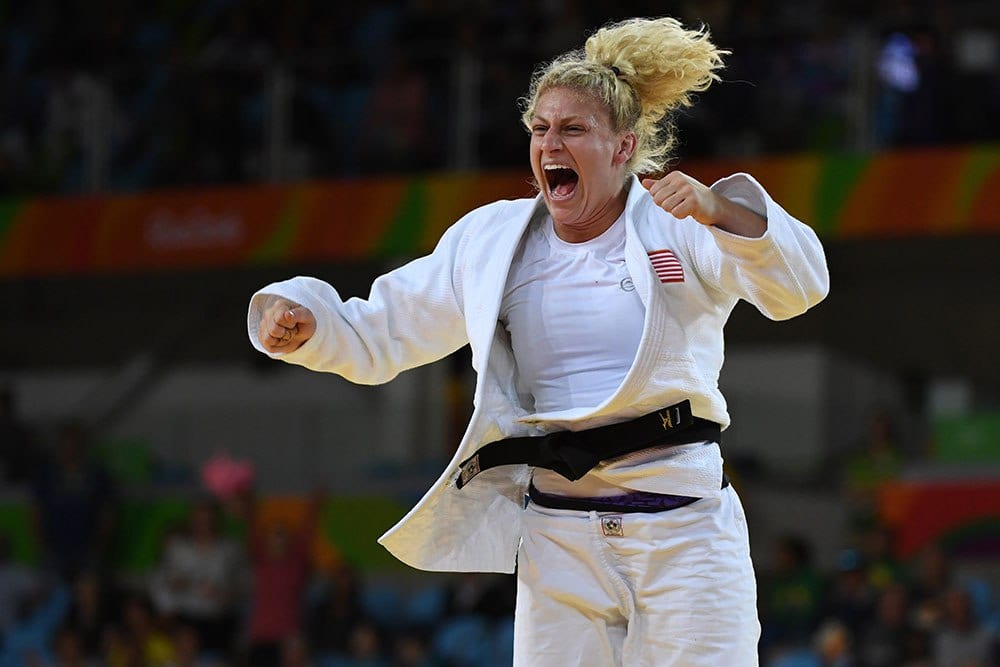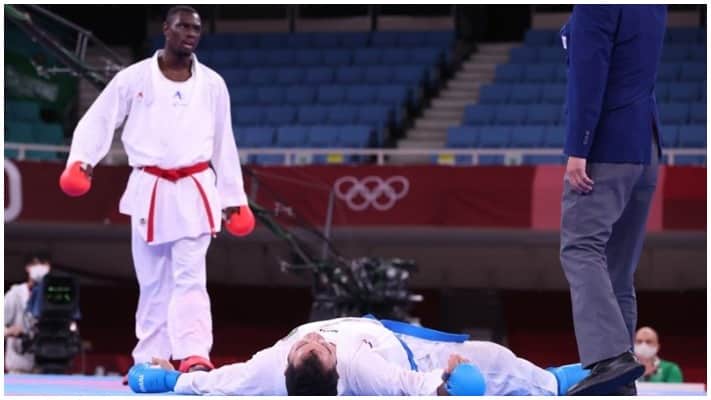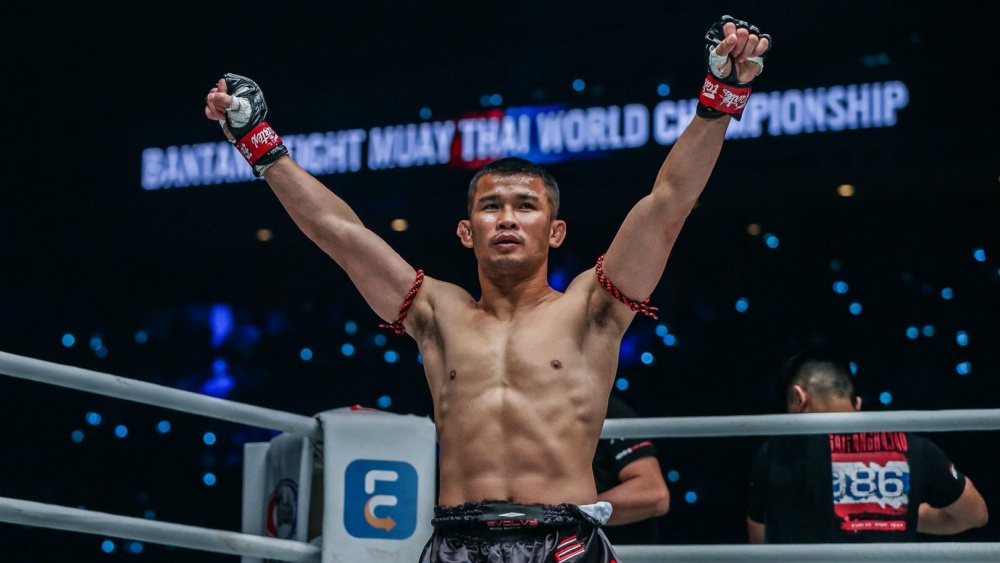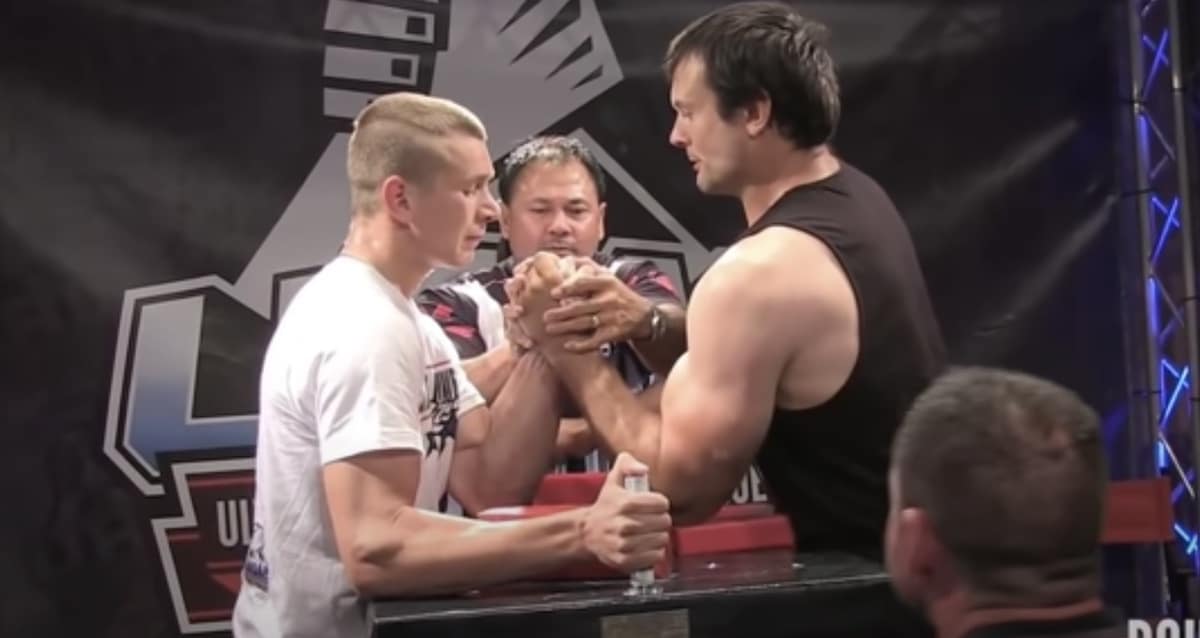
We don’t usually talk about arm wrestlers here on the website, but the story of Oleg Zhokh is an incredible one. The arm wrestler with the Popeye like, left arm defied the odds to become the youngest arm wrestling champion ever.
Here is a bio on the “Ukrainian Mutant “, Oleg Zhokh. Going over how he overcame a birth defect to become one of the biggest stars in the sport of arm wrestling.
Oleg Zhokh Growing Up
Oleg Zhokh grew up in the small Ukranian village of Ozhenyn. He was born with a genetic order called congenital hypertrophy. Meaning that his right arm was bigger than his left arm, which had little to no muscle.
You would think someone with this type of birth defect would not become an arm wrestling champion. But it’s funny how the determination and grit inside a person like Oleg Zhokh would defy the odds.
Oleg Zhokh’s Entry Into Arm Wrestling
Zhokh didn’t venture into arm wrestling until he started taking classes at a university in his late teens in 2009. He would enter his first arm wrestling tournament, where he would use his functioning right hand.
Oleg would lose his first arm wrestling tournament rather quickly and came to a decision. He wanted to begin using his left hand that he was told wouldn’t grow muscle or be as strong.
But Zhokh was up for the challenge and wanted to prove everyone wrong that said it wasn’t possible.
Oleg Zhokh Begins Training His Left Arm
The young Ukranian would immerse himself in the sport of arm wrestling. Training his left arm day and night for it to gain strength to be able to arm wrestle.
His training focused solely on his left arm to force it to grow muscle. He would even build his own piece of exercise equipment. A pulley system connected to cement weights he made to mimic the movement of an arm wrestling match.
When Oleg first started using the machine, he could barely lift one of the cement weights. But Oleg Zhokh would persevere and continue.
Oleg would prove everyone wrong, overcoming his conditioning and forcing his arm to build muscle. After a year of hard training, Oleg’s left arm was twice the size of his right arm.
He was now conditioned and ready to try his hand in arm wrestling one more time.
Oleg Zhokh Wins Throughout Ukraine
After focusing on strengthening his left arm and developing proper technique, Oleg Zhokh would start competing in local tournaments. He would surprise everyone by easily winning arm wrestling tournaments throughout the Ukraine.
Working his way up the ranks until he became the best arm wrestling in all of his country.
Oleg Zhokh’s First International Tournaments
Oleg made his international debut in 2010 at the Nemiroff Cup. Competing with his now giant left hand.
In the same year that he made his debut in international competition, Zhokh would win his first world championship at 18. Becoming the youngest arm wrestling world champion in the history of the sport.
Defying the odds and proving to everyone that said he could not accomplish anything in sports.
The Ukrainian Mutant’s Reign of Dominance
Throughout the 2010s, Oleg Zhokh would be one of the most dominant arm wrestlers in the history of the sport. Starting in the 60 kg weight class before moving up to the 70 kg weight class.
His dominance in the sport would earn him the nickname “The Ukrainian Mutant.” Of course he earned this nickname from his absurdly large left arm that was destroying his competition.
He would travel the world competing in various arm wrestling tournaments. Winning the world and European championships multiple times during this decade of dominance.
Oleg would even do well in open class divisions, where he beat arm wrestlers that were double his size. The Ukrainian Mutant was on top of the arm wrestling world and looked like he would never be stopped.
Tragedy Strikes Zhokh
In 2018, tragedy will strike. Oleg would be in a tragic car accident that would take the life of his father and his friend Andriy Pushkar. Another high level arm wrestling champion.
Zokh was left severely injured and distraught from the tragedy that had occured. Due to the accident, he severely fractured his left hand and had multiple internal injuries, as well as brain damage.
Nobody knew if the Ukrainian Mutant would ever compete in arm wrestling again after the accident.
Oleg Zhokh’s Comeback
Just like Oleg Zhokh had done all of his life, he would persevere and begin a long road to recovery. He would go through intense rehab for the next three years.
Not only to rehab his arm, but also to be able to do normal functions once again. Then in 2001, Oleg would shock the world.
He would make his comeback to arm wrestling in 2021 at that year’s world championship event. Zhokh would compete a class up in the 80kg division, but it was like he never left the sport.
It was a vintage Ukrainian Mutant performance as Zhokh would clear out his division. Becoming a world champion for the ninth time in his career.
One of the Greatest Ever
The Ukrainian Mutant Oleg Zhokh will go down as one of the greatest arm wrestlers in the history of the sport. He proved everyone that said he couldn’t do it wrong to become a nine time world champion in arm wrestling.
Zhokh’s story is one of the most inspirational in the history of sports and proved that you can’t teach heart. Oleg is already considered one of the best arm wrestlers ever and will continue to compete and add to his legacy. Possibly becoming a 10 time world champion or even more if he decides to continue competing.
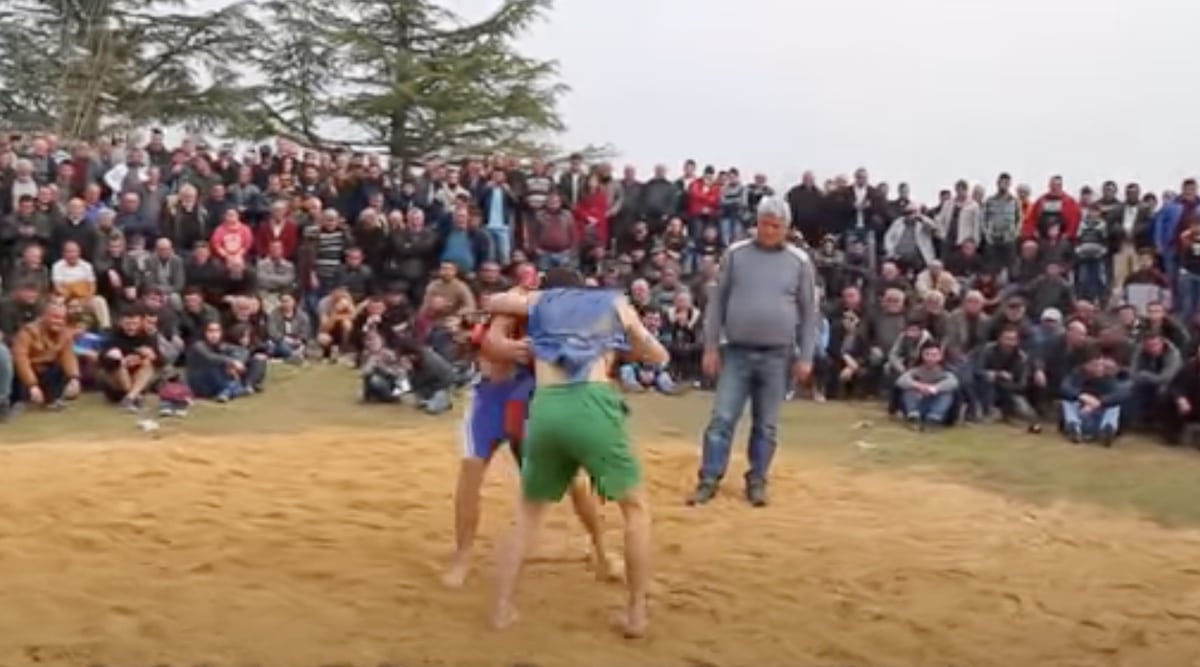 The small Eurasian country of Georgia has been a hotbed for producing some of the best wrestlers in the world. Georgian wrestling is an incredibly tough sport and we’re going to tell you a little about their style called Chidaoba wrestling. Here is a quick history lesson on Georgian wrestling and their style of wrestling […]
The small Eurasian country of Georgia has been a hotbed for producing some of the best wrestlers in the world. Georgian wrestling is an incredibly tough sport and we’re going to tell you a little about their style called Chidaoba wrestling. Here is a quick history lesson on Georgian wrestling and their style of wrestling […]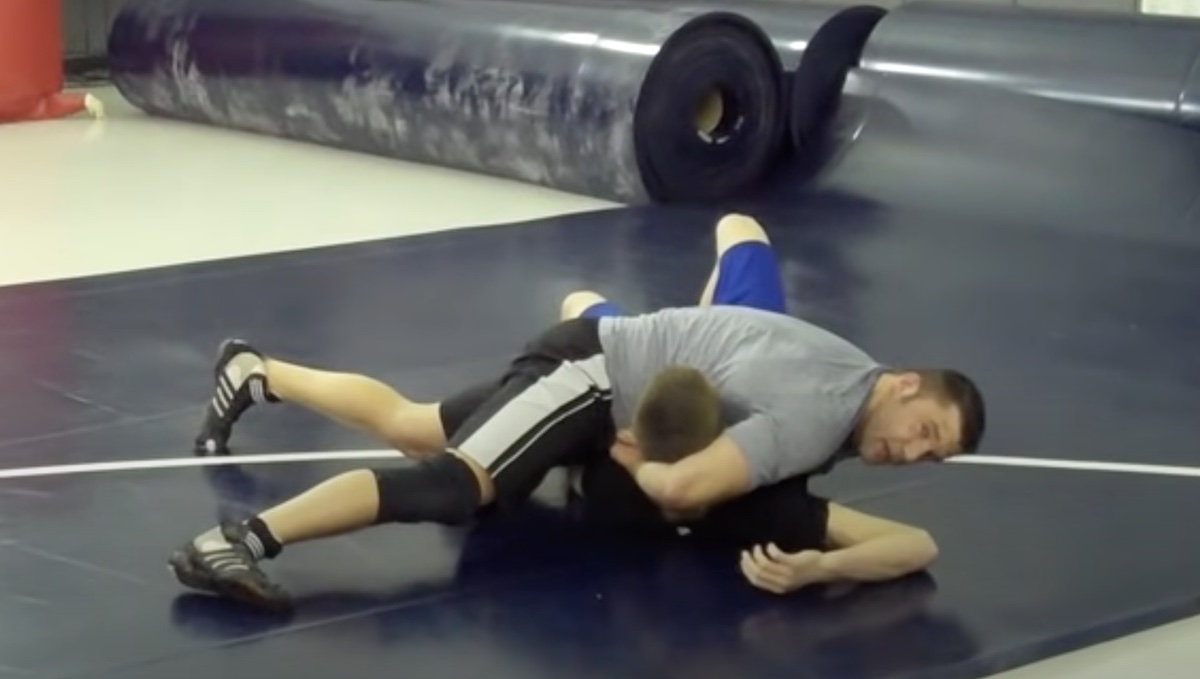 For those that have competed in wrestling, they are well aware of the power of the half nelson. This effective technique has translated very well to Jiu Jitsu, where it’s to advance to dominant positions and set up submissions. Let’s dive in and tell you everything you need to know about the half nelson. We’ll […]
For those that have competed in wrestling, they are well aware of the power of the half nelson. This effective technique has translated very well to Jiu Jitsu, where it’s to advance to dominant positions and set up submissions. Let’s dive in and tell you everything you need to know about the half nelson. We’ll […]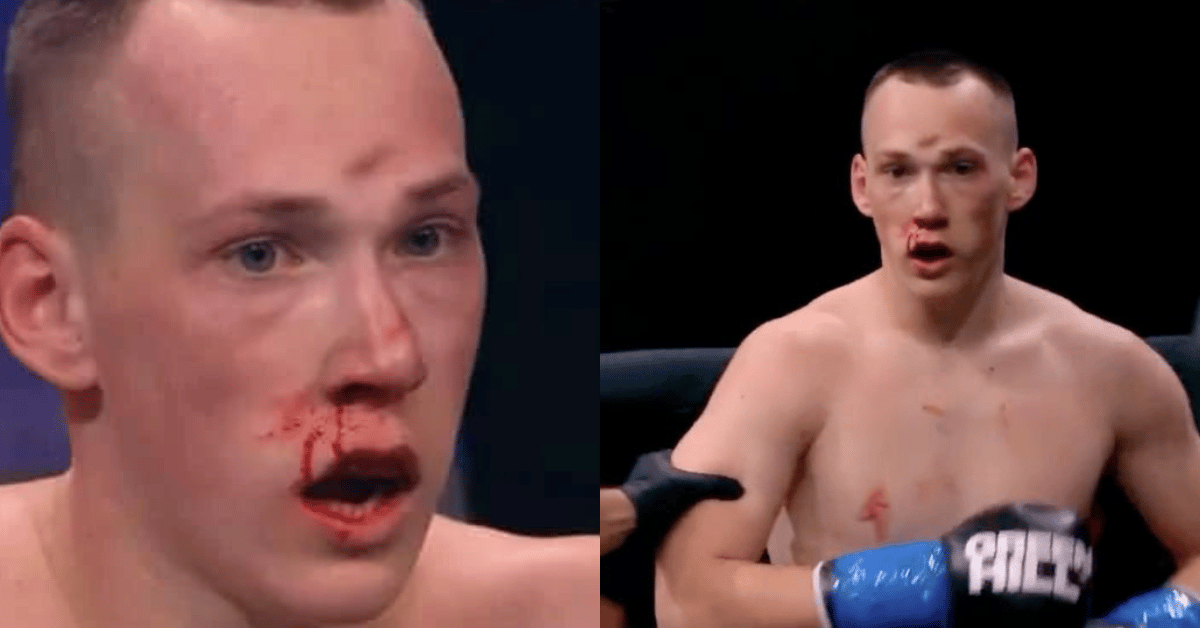 An unfortunate end to any fight is a fighter experiencing a skull fracture. In his professional debut, Russian kickboxer Danil Sharov suffered a fractured skull when he absorbed a knee from Danil Kirikov at WAKO’s FKR PRO 1 in a lightweight clash. The knee was landed during a clinch and visibly caused damage to the […]
An unfortunate end to any fight is a fighter experiencing a skull fracture. In his professional debut, Russian kickboxer Danil Sharov suffered a fractured skull when he absorbed a knee from Danil Kirikov at WAKO’s FKR PRO 1 in a lightweight clash. The knee was landed during a clinch and visibly caused damage to the […]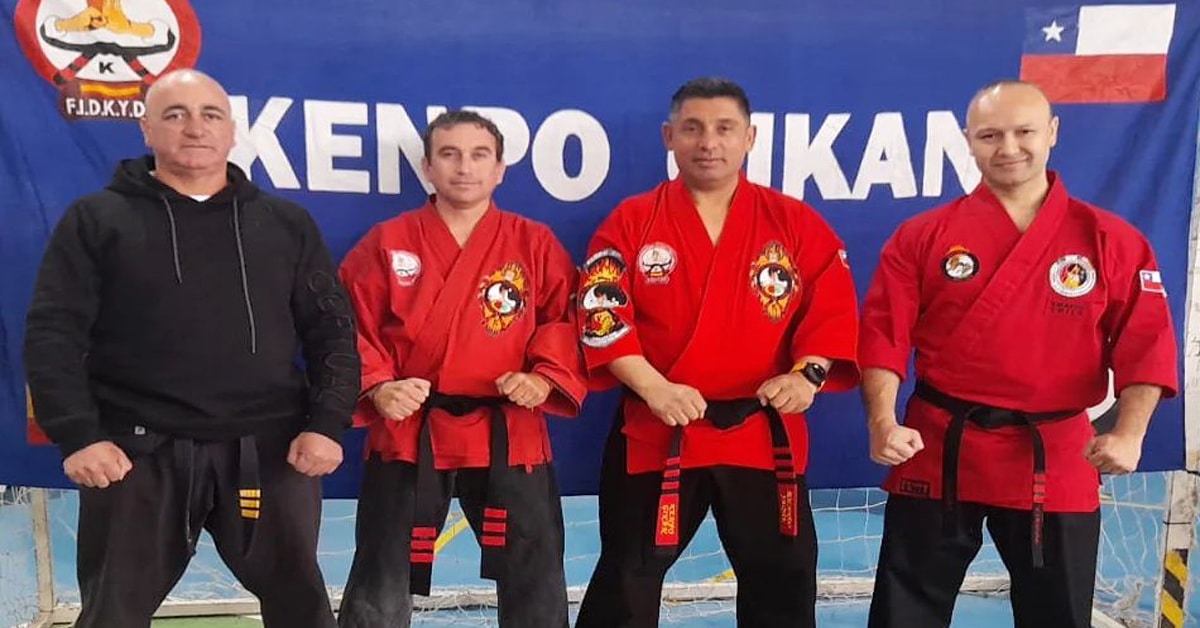 Kenpo Karate is one of the most effective offshoots of Karate that has been developed. Known for its practicality and adaptability to be used in self-defense Here is everything you need to know about Kenpo Karate. Going over all of the forms of Kenpo Karate, their history, the training, and the rules of Kenpo Karate […]
Kenpo Karate is one of the most effective offshoots of Karate that has been developed. Known for its practicality and adaptability to be used in self-defense Here is everything you need to know about Kenpo Karate. Going over all of the forms of Kenpo Karate, their history, the training, and the rules of Kenpo Karate […]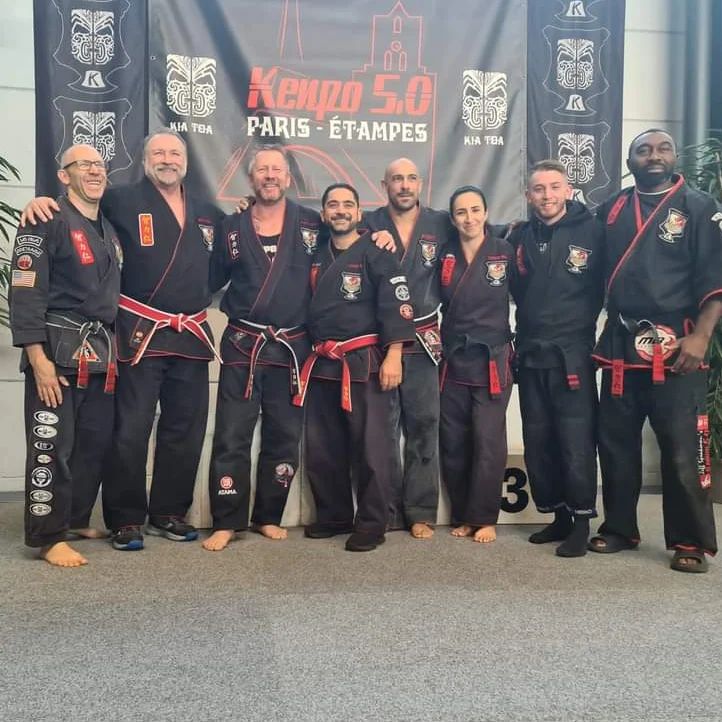
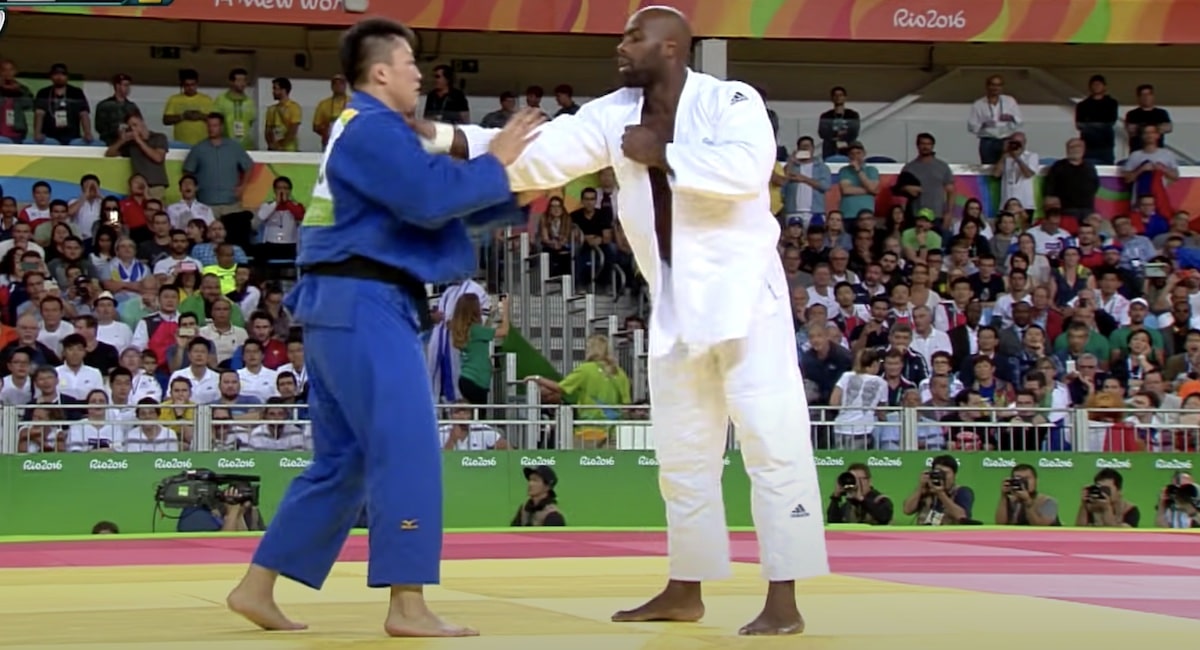 Every four years, the Olympics put on the biggest spectacle in sports. Tens of millions from around the globe watch the games, and some of the most popular is martial arts events. Do you know which martial arts are in the Olympics? There are quite a few, and below we’ve listed all the martial arts […]
Every four years, the Olympics put on the biggest spectacle in sports. Tens of millions from around the globe watch the games, and some of the most popular is martial arts events. Do you know which martial arts are in the Olympics? There are quite a few, and below we’ve listed all the martial arts […]